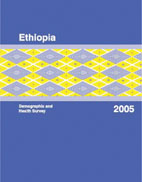10.3.1 Censuses, large-scale surveys and community surveys
A census is a collection of information on everyone in a population – usually everyone in a national population, such as the whole of Ethiopia, or everyone in a national region such as Oromiya or Tigray. Census information is collected in order to gain important data that is relevant to the population as a whole and is ideally collected from every household, although this is not always possible in remote rural areas or where nomadic people are moving from place to place. Large-scale surveys are similar to a census, but the large numbers of people who are questioned are selected to be representative of the population (i.e. not everyone is questioned). In a community survey, the aim is to obtain information about everyone in a local community, usually by questioning an adult member of each household.
The national census, large-scale population surveys and local community surveys all tend to collect demographic and/or epidemiological data. Demographic data are counts of certain social characteristics of a human population: for example, the number of people in a household, their age, gender, ethnic group, whether married, single or divorced, when children were born, etc. – and sometimes also the religion, economic circumstances and other personal characteristics of the population. Epidemiological data refers to counts of diseases, disorders and disabilities in the population, including those leading to deaths. The combination of demographic and epidemiological surveys can shed light on factors that increase the risk of developing particular diseases, or dying from certain causes. The data can be collected at the national level in a census or large-scale survey, or at the local level in a community survey.

An example of a large-scale national survey is the Ethiopian Demographic and Health Survey (EDHS), which is a nationally representative household survey that collects data on health and population characteristics every five years (Figure 10.5). The EDHS collects data from a large number of households spread throughout the whole of the country on a wide range of factors, including birth rates, average family size, knowledge of issues such as family planning, mortality (death) rates in different age groups, and the main causes of death and illness.
10.3 An introduction to surveys
